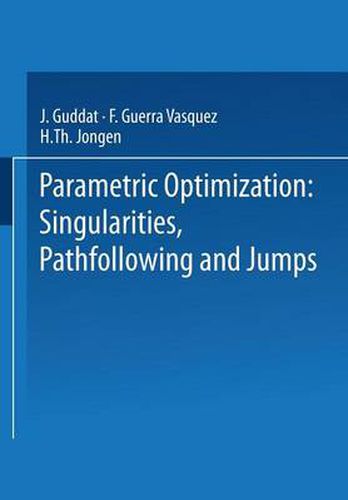Readings Newsletter
Become a Readings Member to make your shopping experience even easier.
Sign in or sign up for free!
You’re not far away from qualifying for FREE standard shipping within Australia
You’ve qualified for FREE standard shipping within Australia
The cart is loading…






This title is printed to order. This book may have been self-published. If so, we cannot guarantee the quality of the content. In the main most books will have gone through the editing process however some may not. We therefore suggest that you be aware of this before ordering this book. If in doubt check either the author or publisher’s details as we are unable to accept any returns unless they are faulty. Please contact us if you have any questions.
This volume is intended for readers who, whether they be mathematicians, workers in other fields or students, are familiar with the basic approaches and methods of mathematical optimization. The subject matter is concerned with optimization problems in which some or all of the individual data involved depend on one parameter. Such problems are called one-parametric optimization problems. Solution algorithms for such problems are of interest for several reasons. We consider here mainly applications of solution algorithms for one-parametric optimization problems in the following fields: (i) globally convergent algorithms for nonlinear, in particular non-convex, optimization problems, (ii) global optimization, (iii) multi-objective optimization. The main tool for a solution algorithm for a one-parametric optimization problem will be the so-called pathfollowing methods (also called continuation or homotopy methods) (cf. Chapters 3 and 4). Classical methods in the set of stationary points will be extended to the set of all generalized critical points. This could be helpful since the path of stationary points stops in this set, but there is a continuation in the broader set of generalized critical points. However, it will be shown that pathfollowing methods only are not successful in every case. This is the reason why we propose to jump from one connected component in the set of local minimizers and generalized critical points, respectively, to another one (Chapter 5).
$9.00 standard shipping within Australia
FREE standard shipping within Australia for orders over $100.00
Express & International shipping calculated at checkout
This title is printed to order. This book may have been self-published. If so, we cannot guarantee the quality of the content. In the main most books will have gone through the editing process however some may not. We therefore suggest that you be aware of this before ordering this book. If in doubt check either the author or publisher’s details as we are unable to accept any returns unless they are faulty. Please contact us if you have any questions.
This volume is intended for readers who, whether they be mathematicians, workers in other fields or students, are familiar with the basic approaches and methods of mathematical optimization. The subject matter is concerned with optimization problems in which some or all of the individual data involved depend on one parameter. Such problems are called one-parametric optimization problems. Solution algorithms for such problems are of interest for several reasons. We consider here mainly applications of solution algorithms for one-parametric optimization problems in the following fields: (i) globally convergent algorithms for nonlinear, in particular non-convex, optimization problems, (ii) global optimization, (iii) multi-objective optimization. The main tool for a solution algorithm for a one-parametric optimization problem will be the so-called pathfollowing methods (also called continuation or homotopy methods) (cf. Chapters 3 and 4). Classical methods in the set of stationary points will be extended to the set of all generalized critical points. This could be helpful since the path of stationary points stops in this set, but there is a continuation in the broader set of generalized critical points. However, it will be shown that pathfollowing methods only are not successful in every case. This is the reason why we propose to jump from one connected component in the set of local minimizers and generalized critical points, respectively, to another one (Chapter 5).